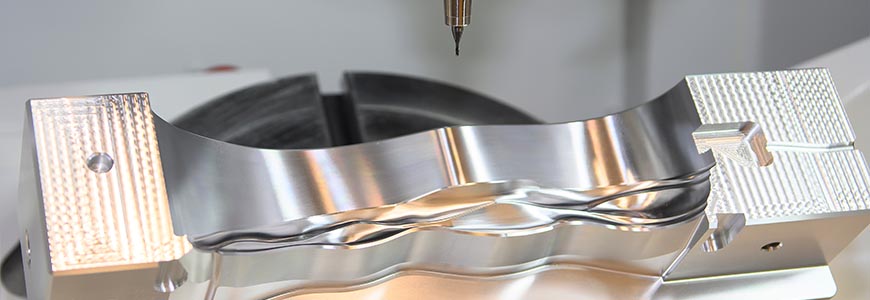Moving from 3D Printing to CNC Machining – When and How?

It is almost impossible to describe any digital manufacturing process today without imagining some form of input from 3D printing. In fact, 3D printing and additive manufacturing remain the fastest growing manufacturing technology. 3D printing has widespread uses, from basic manufacturing like jewelry and consumer electronics to advanced sectors like aeronautics, automobiles, and medical limbs (prosthetics). Because of its fantastic turnaround, cost savings, and rapid prototyping, 3D printing will continue to revolutionize product development, testing, and iteration for the years to come.
However, as amazing as 3D printing can be, it is not the preferred choice for some phases of product development and mass manufacturing ultimately. This is because 3D printing has its limits. The many advantages of the technology are better in the first phases of any product development cycle, but as soon as design iteration nears completion, most businesses switch to CNC machining. Here’s why, how, and when to do it.
When to use Additive Manufacturing
Additive manufacturing offers excellent design flexibility and a quicker way to test new concepts and ideas. 3D printing is ideal when the product development cycle has just begun, emphasizing moving from the on-paper/digital drawings to obtaining real-life physical prototypes. These prototypes are not even close to the final product, but they serve as a basis for testing and developing the other parts of the product.
3D printing should be used in these early stages when the total number of prototypes required is only a handful (1-5 units), and cosmetic finish is not immediately a priority. Because of the affordability, these parts can be printed repeatedly without incurring any significant cost. Prototypes may even be printed on a regular desk model 3D printer.
• When to use CNC machining
CNC machining is radically different from 3D printing. While 3D printing uses additive manufacturing technology (creating parts by building from the ground up), CNC resembles traditional machining, using subtractive means (removal of material) to get the final workpiece. It is, of course, more specialized than conventional means because of the aid of computerized numerical controls.
Generally, CNC inputs are favored when superior quality parts are required. This technology takes longer to machine a part than 3D printers and can be relatively expensive compared to 3D printing. The benefits, however, outweigh the capabilities of additive manufacturing. CNC machining delivers its cost savings on mass production. The parts are functionally and physically more trustworthy than 3D parts, which is why it is better employed when you have reached your finalized prototype stages and surpassed experimentations with 3D printing.
• Meeting point – When, Why, and How to transition
Knowing when to transition to CNC machining may be confusing. It is often better to consider 3D printing and CNC machining as complementary technologies. For instance, automobile manufacturers may develop a new concept. To test this, they will likely use 3D printing to come up with the form and check the part’s size, fit, and compatibility. When the concept has been concluded and mass production beckons, CNC machining will be used to make a more functional prototype. This prototype will be evaluated for design iteration, application, and functionality.
The reason for transitioning into CNC machining is quite straightforward – cost, quality, and functionality. The functionality here includes strength and rigidity. The part works and maintains its function in real-life applications without cracking, deforming or causing part/machine failure. The quality aspect will include the excellent finish that CNC parts boast of, and the cost entails the lower cost of the part per unit when macro production is factored.
3D printing is best used in early to pre-finalized prototyping for 1-10 units. The technology is fast, easy to modify, accommodates design changes and delivers parts with complex geometry. However, it is not great for delivering part functionality, tight tolerances, and high-stress applications. CNC machining is favorable for final prototyping, bridge production and mass manufacturing. The parts made with CNC can accommodate tight tolerances, high strength, stress and temperature. The parts are highly functional, and the technology can work with a considerably wider array of materials than 3D printing. Because of the high CAM (model) cost of CNC, it is reserved for when a design is concluded, and production is imminent.
Move to CNC when you have stopped making major design changes, when you have started DFM, when you require more consistency in your parts and when 3D parts are not strong or functional enough for your needs, where there are tapped holes and need for tighter tolerances in your design.
Bottom Line
CNC and 3D technologies are essential tools in any product development cycle. Stick to 3D printing when prototyping requires on-the-go corrections and design has not been concluded. You simply can’t find a better option than CNC machining for mass production, low-volume market runs and final prototyping.
3D Printing and CNC prototyping at Premium Parts
Premium Parts offers professional 3D printing, CNC machining and rapid prototyping service for making a wide array of product parts. At Premium Parts, we have numerous printing technologies available for use with many high-grade printing materials and filaments. Our excellent quality control systems ensure that all our deliveries are speedy and standard for every manufacturing size in both low-volume and high-volume productions. Feel free to reach out for a free quote on your project and determine the best materials and print technology to use on your next project!






